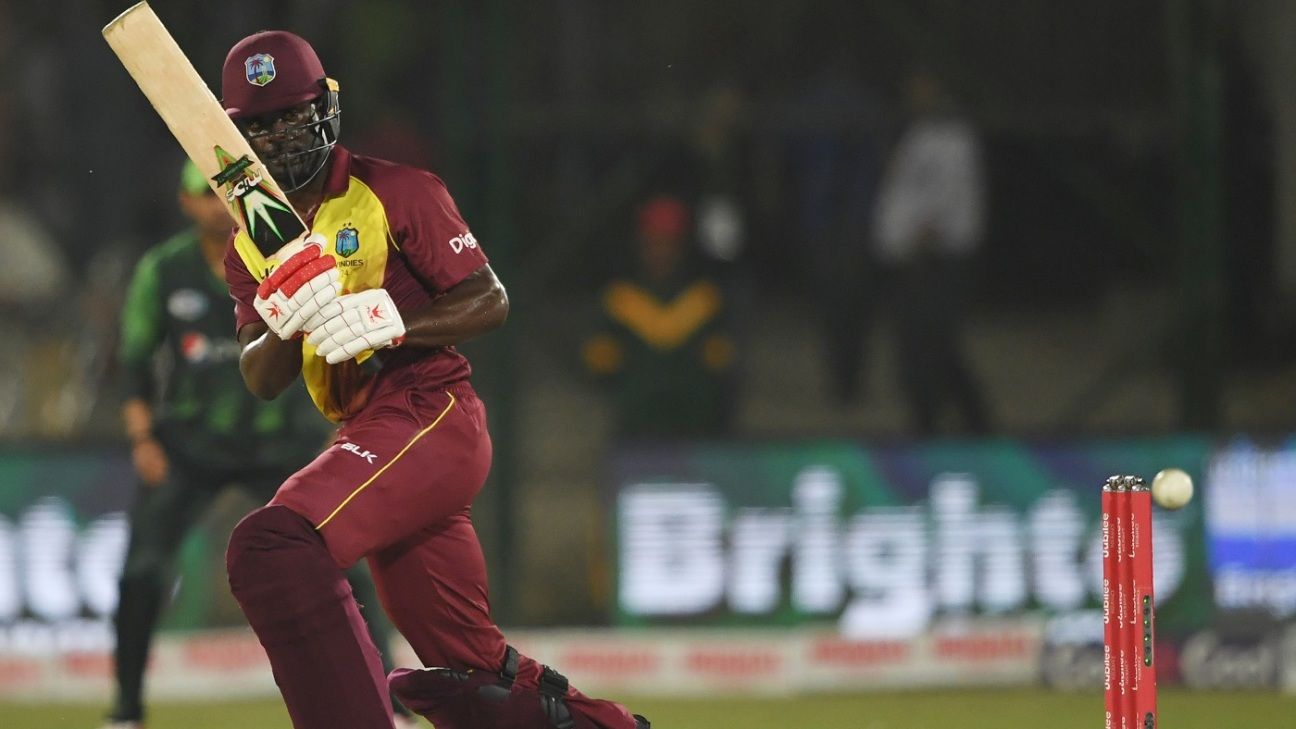Momentum has been a word bandied about the halls of Sharjah Cricket Stadium the past four days. Freely waved with the same gusto as the batsmen’s hands flying through and across the line of the ball.
Talk has centred on the virtues of hitting your stride early and turning the screw, or the perilous nature of failing to do so. Plans have been built on a relentless foot to the floor, the best performances coming from those able to ride the crest of the reckless unknown surf of T10 cricket.
Mohammad Shahzad’s opening night massacre had it. Aamer Yamin showcased it with four wickets in four balls, while Pravin Tambe’s five-for felt like gravitational momentum in cricketing metaphor as Kerala Knights’ top order collapsed like a falling house of cards.
And then there was the runaway freight train of Northern Warriors’ 183 for 2 as each batsmen fed on, then developed the last’s energy in a procession of sixes.
The instant nature of T10 nurtures this environment. Games swing violently one way or the other in moments seized upon by the protagonists on the pitch.
Players seeing it like a football are hard to stop with such little time on the shot clock before the innings has even begun. And with players taking on a match either every or every other day, a squeezed tournament keeps you in good touch, while the relatively light work of 10 overs keeps you fresh.
A second successive unbeaten 68 for Andre Fletcher on day four was further evidence of the benefits for batsmen that find their rhythm early on, as well as how they can almost carry over scores like a lottery rollover.
Back-to-back fifties for the West Indian delivered two wins in as many days for Pakhtoons, launching them to second place in the table, and injecting impetus in their challenge for the trophy. And the 30-year-old batsman from Grenada says the momentum is keenly felt in the unpredictable world of 10-over cricket.
“Knowing how the game runs, you’re not sure what can happen,” Fletcher said. “In a T20 game you might tell yourself you have time but here you have to go from ball one. Anything can happen. You can sky the first ball, you can get bowled so you just have to ride your luck and hope that things play out well.
“We do [feel the momentum shift]. In this game I was a bit nervous coming to the end when I saw [Thisara] Perera hitting the balls over the rope. It’s never over until it’s over. It’s a game that can turn in just one over. We have to keep our fingers crossed and hope for the best.”
Rajput’s South African batsman Rilee Rossouw shared a similar view on how single moments can alter the game’s complexion.
“It’s so short of a format that one ball changes the game. If you miss your yorker you’re going to get hit for a six,” he said.
It’s true, but it doesn’t have to be all doom and gloom for the bowlers. They too can wrestle games in their favour, as did the Bengal Tigers attack in the second game on Saturday night by tearing through a Punjabi Legends line-up that could muster only 77 for 9 from their 10 overs.
Batsmen are taking more risks in the frantic search for big hits, they are hitting more shots in the air and once you tap into the middle order and the run rate soars, there is greater opportunity to take wickets.
Yamin and Tambe are obvious examples of this. So are the efforts of Ravi Bopara and Chris Jordan who have taken 4 for 15 and 4 for 6 respectively in the competition. With either runs on the board or early pressure through removing the top order, there is reward for bowlers.
It makes for rollercoaster cricket, which largely equates to compelling viewing. And the secret to coming out on a peak more often than a trough? According to Fletcher, that’s simple.
“I’m just playing my natural game. See ball, hit ball and try and stay as still as possible.”
